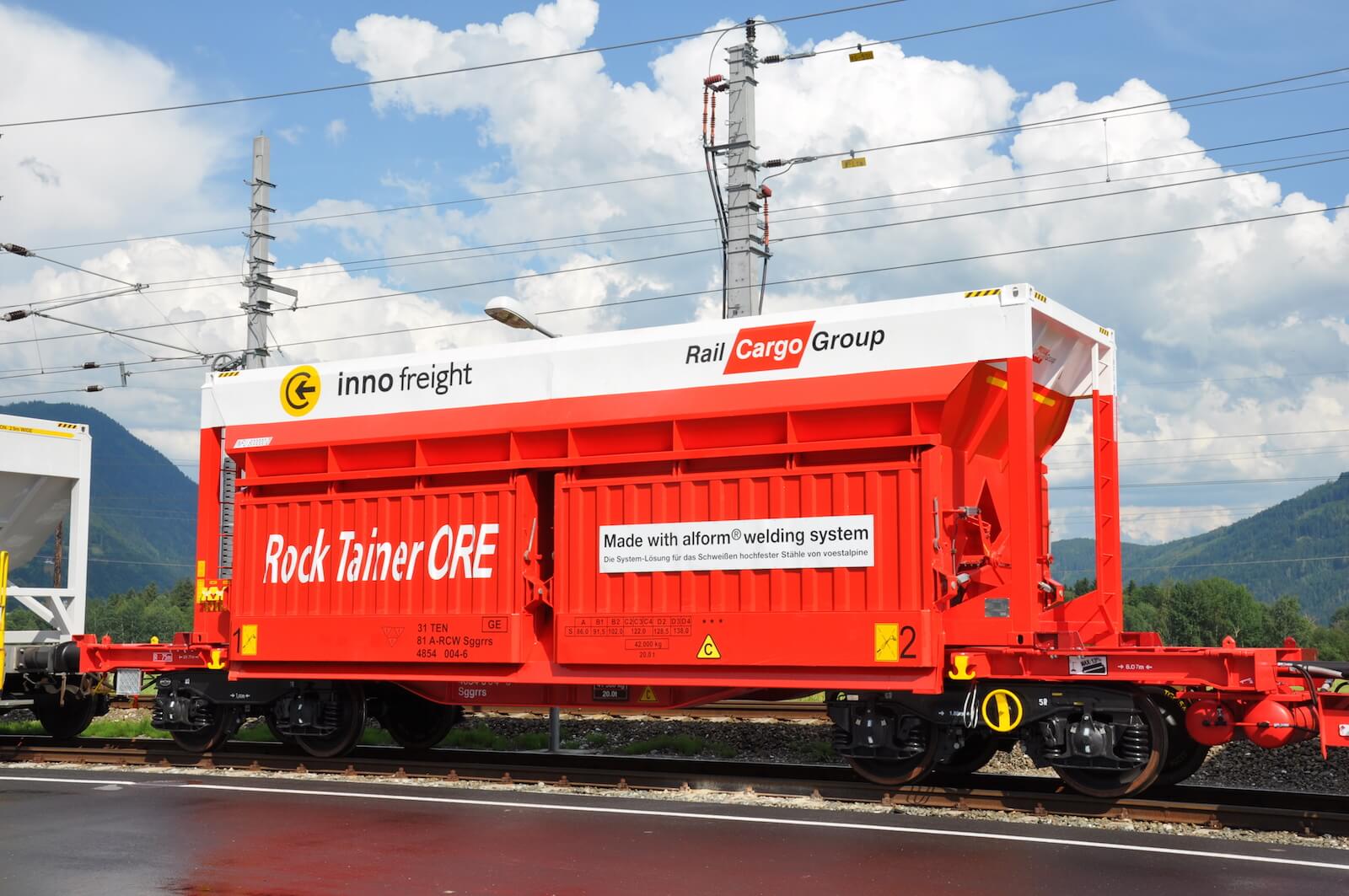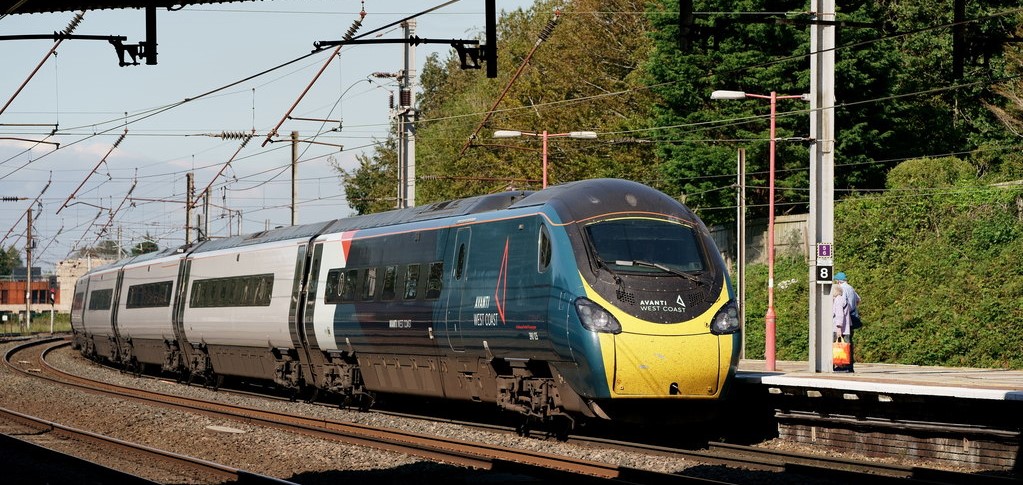05/10/2022 – By Frédéric de Kemmeter – Railway signalling and freelance copywriter – Suscribe my blog
🟧 Back to homepage 🟧 See our brief news
Within the framework of the European programme, an initiative is underway to seek the most competitive intermodal wagon possible. Some elements of this project were presented at InnoTrans 2022 and we give you some details here.
The main aim of the FR8RAIL project is the development of functional requirements for sustainable and attractive European rail freight. The objectives of the project are:
- A 10 % reduction in the cost of freight transport measured by tonnes per Km,
- A 20 % reduction in the time variations during dwelling, and
- increase attractiveness of logistic chains by making available 100 % of the rail freight transport information to logistic chain information systems.
The objectives of the FR8RAIL project will be achieved by developing a number of vital areas within freight rail. There are six main areas of work that form the backbone of this project’s approach:
- Business Analytics, KPIs, Top Level Requirements,
- Condition Based and Predictive Maintenance,
- Telematics & Electrification,
- Running Gear, Core and Extended Market Wagon,
- Automatic Coupling,
- High level System Architecture and Integration.
A new intermodal wagon
CFW, which means Competitive Freight Wagon, is an initiative to develop a wagon for the future of rail freight. The prototype was unveiled in Berlin during the last InnoTrans and developed by an aerospace research centre, Deutsches Zentrum fur Left-und Raumfahrt (DLR), CEIC and the national rail industry association VDB. Large companies such as GMT, INDRA, ZF Group and Knorr Bremse are also part of the project.
The project is funded by the FR8Rail IV programme, part of the Horizon 2020 innovation programme supported by the European Union. The aim of the project is to increase the efficiency of container freight trains and to optimise wagon design solutions for these trains.
The research work for a cutting-edge future goods freight car – and thus full-scale hardware. The prototype has only two wheel axles, so without bogie, is height-adjustable and can be coupled digitally and automatically. A special lightweight steel construction was used for the design.

New technicals
The CFW-EMW Type 3 prototype wagon is a wagon made of special, lighter alloys and profiles, allowing the composition of trains for container transport with lengths of 750 metres, with a single locomotive. The wagon is one with streamlined shapes, a two-axle running system, powerful electronically controlled brakes and advanced safety systems. Maximum speed is 140 kmh. It has a level control with air springs for primary suspension.
At almost 13 metres long, the wagons will weigh up to 10 tonnes depending on configuration. The structure of the wagon is topology-optimised. This means that wagon has a lightweight steel underframe carried on two single-axle trucks, with four individually controlled GMT air springs to keep it at a constant height and still fit unevenly loaded swap bodies within the permissible loading gauge.


The swap bodies or containers are connected to the underframe by four links that create a virtual pivot and provide a degree of radial self-steering of the wheelsets into curves. This is expected to reduce both rolling resistance and wear, while the use of disc brakes will minimise noise emissions (< 70 dB(A) at 100 km/h).
However, research into lighter and lighter wagons is causing problems with the stability of these vehicles. DLR, for example, explains that it has taken these constraints very seriously and has a crosswind test facility in Göttingen to study the effects of crosswinds and gusts on moving trains.
Digital purposes
The wagon is part of the proposed freight train of the future, which makes the connection from terminal to terminal without changing the layout, locomotive or requiring extensive shunting operations. The wagon is compatible with the freight wagon coupling system that will be implemented at European level in the near future – Digital Automatic Coupling – DAC.
The coupling of wagons and locomotive will be done automatically, just like the container locking systems on wagons. The prototype is equipped with Dellner Type 5 digital automatic coupler carrying the data connection and a 400 V AC power feed for the onboard systems. All systems are linked via the cloud to a train integrity supervision system, which ensures all operating and safety systems both during shunting and while running.

In addition, the prototype is equipped with an onboard system for condition monitoring. It continuously measures the condition of the two wheel axles and the track bed. This data can contribute to condition-based and predictive maintenance in the future.
With the implementation of all the design solutions used on these wagons, wear on active components such as braking systems and locomotive traction will be reduced, as well as wear on the track.
It is expected that once all approvals have been completed this wagon would be able to start series production, based on licences for interested rolling stock manufacturers.
FR8-Lab Test Container
The FR8 programme also includes tests on containers. It is intended for :
- Measure surface pressure & environmental conditions experienced by a shipping container on a real freight-train;
- Determine the drag (efficiency) & side-wind stability (safety) of operational freight trains in real-world conditions: average representative conditions, specific operating scenarios (bridge, tunnel, crosswind…)
This wagon is designed to maximise the usual 750m length that is becoming the norm for competitive rail transport. The gap between two wagons would not exceed 1m, which improves the loading efficiency of the full train length.
It should be noted, however, that the research on this wagon overlooks the semi-trailer option, as this system, which is currently widely used, generates a lot of dead weight because the road axles are on board, which is precisely the opposite of the desired durability (more weight, more wear).
It now remains to be seen what will be retained and feasible on this new wagon that is supposed to improve the competitiveness of rail freight. 🟧

Related topics:
 Ex SpaceX engineers want to build autonomous rail cars
Ex SpaceX engineers want to build autonomous rail cars
24/01/2022 – After the US company Intramotev Autonomous Rail, now three ex SpaceX engineers are teaming up to build autonomous, battery-powered freight train cars. The trio consists of CEO Matt Soule and co-founders Ben Stabler and John Howard. They have named their new Los Angeles-based startup Parallel Systems and it has raised $50 million in a Series A funding round. In an…
 How the modular freight wagon is the future of rail freight
How the modular freight wagon is the future of rail freight
19/10/2020 – Freight wagons have the particularity of responding to a specific industrial sector, such as chemicals or wheat. But the negative side of this specialization is that it leads to mono-use which causes empty returns. The modular wagon avoids this.
 Railways: more technologie and less proceedings
Railways: more technologie and less proceedings
28/11/2021 – Beyond technology, rail however must make a qualitative leap by eliminating the tendency to stifle progress with a mountain of procedure, sometimes jeopardising the progress expected from an innovation.
05/10/2022 – By Frédéric de Kemmeter – Railway signalling
Suscribe my blog


Vous devez être connecté pour poster un commentaire.